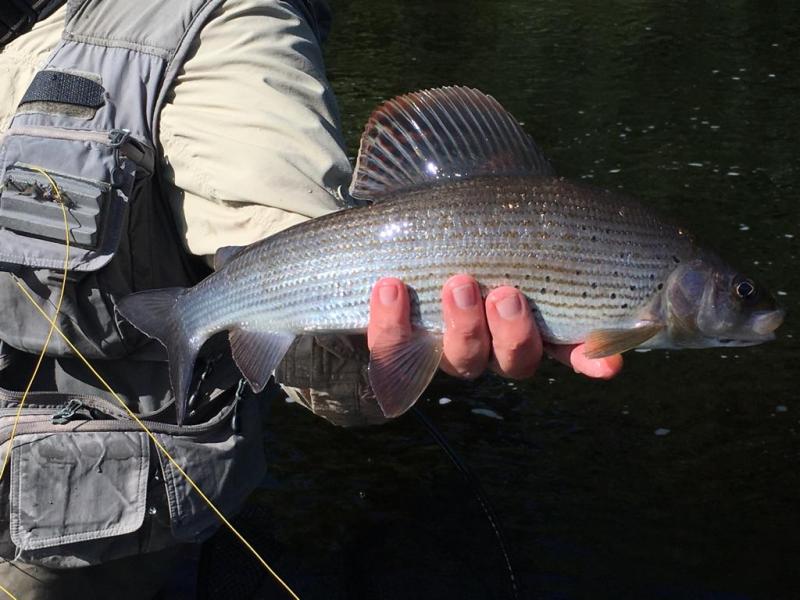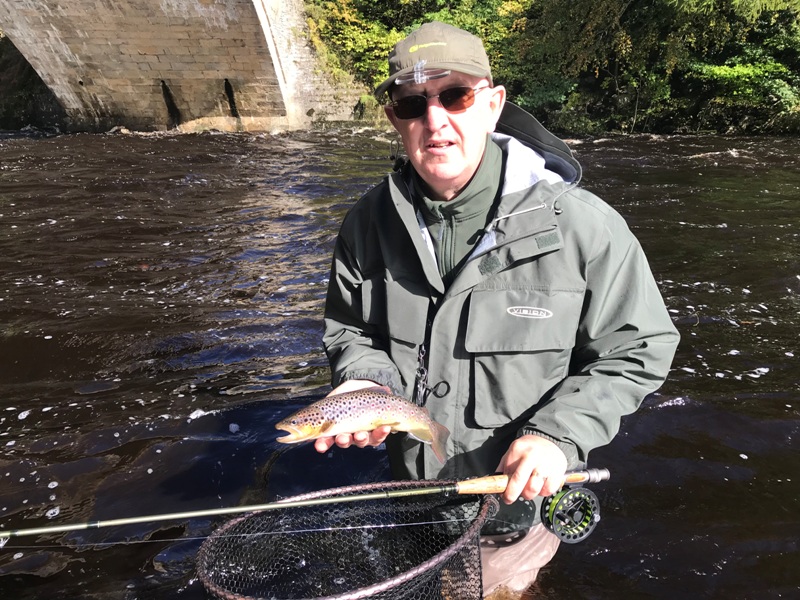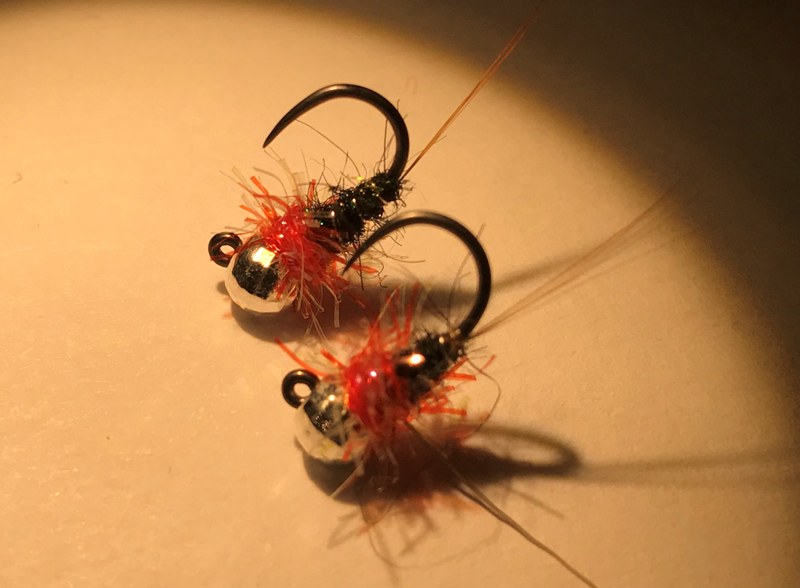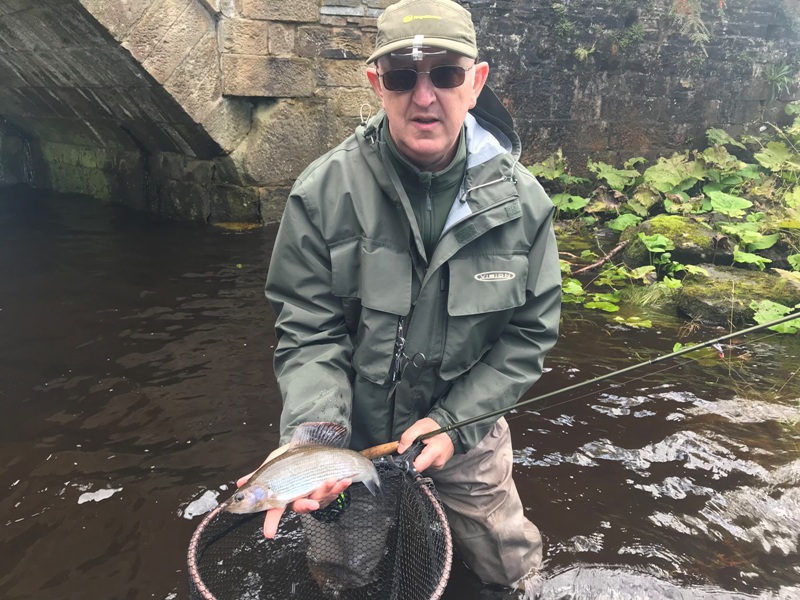| Back to Back Issues Page |
 |
|
How to fish big (high water) Rivers! October 04, 2019 |
How to fish big (high water) Rivers!A good friend of mine, Pete, from London came up to fish with me on the last weekend in September to say goodbye to the wild brown trout. After 30th September we cannot pursue brownies because they need peace in order to spawn and preserve this valuable wild genetic stock. In anticipation of our meeting we were both dreaming of an idyllic early autumn day when a wild trout would rise freely to a well presented dry fly on a windless mild day with good hatches of fly. The river level would be perfect which would be about 50-54 cm on the Environment Agency watering measuring station there. Yes that was the day we were both looking forward to in great anticipation before reality hit us both between the eyes like a large brick or rather deep and low weather depression.
Bright low and clear- perfect for grayling on driesI got a phone call the afternoon before and Pete sounded worried “Are you sure we are going to be able to fish tomorrow Jon the level is very high and more rain is forecast”. “Pete I’ve been fishing big rivers all year especially recently- don’t worry we will catch”. I’ll state right up front here, give me a choice and I’ll fish dry flies in a river on typical summer flows and I’ll do better than the average fly fisher and as the phrase goes be happy as a pig in muck. Especially on an early season river when the fish are still relatively naive and I can nail them like shelling peas. It still gives me a buzz when that happens. But if I was a bona fida single method fly fisherman I’d have been cream crackered for the latter half of this season.
“And the rain, rain, rain came down, down, down” the tune accompanying Whinie the Pooh from the Disney feature of A.A. Milne’s classic. I know because I got a double hit because it was a favourite both of my sister and daughter. And living in a rain shadow like I do that dam tune has come back to haunt me because I am always humming it. I am humming it because it seems to have been raining for weeks. My small tail water “always fishable stream” is a chocolate swollen torrent. And I checked the forecast and I cannot remember seeing this before. The 72 hours ahead are forecast as......yes heavy rain. And then beyond the 72 hours of certainty in the model- for the following 10 days is forecast ......more rain. If you are going to wait until the river is a friendly “fishable” level you are going to miss a large and best part of the grayling season. You need some knowledge of how to fish in high waters.
When we arrived at our location the river was exactly 1.52 cm on the gauge or a full 1 metre above good “dry fly conditions”. To put this in perspective the river reaches this height in a “typical” year about twice only. 99% of the river was completely unfishable and consisted of raging torrents and violent white water, the force of which could surely snap a man in half! Not a friendly river. The trick is to find the 1 % of river that is fishable in these conditions. And when you do you can be in for a bonanza catch when you employ the right tactics and flies. I reassured Pete who was gazing somewhat forlornly at the maelstrom that was usually an inviting section of knee deep stream that the fish will be concentrated when you find them and I knew where to find them. There is a school of thought that these conditions are hopeless because the fish are in a state of stress. I don’t buy this based on evidence. In fact I contend that brownies can go into a feeding frenzy as a rising river brings extra bank washings and various bugs, slugs and worms readily accepted by the trout and grayling. Moreover because a raging river reduces available suitable habitat so fish become packed in “like sardines” where the level and flow is acceptable. This gives the fly fisher a major advantage because competitive pressure comes into play....... “If I don’t get that tasty morsel he will”.
Depth Charger RBS- a must for coloured waterThere is no point in pretending these conditions require subtle flies. Visibility to our eyes can be down to inches or less because higher water also carries more sediment and colour. I go straight to my coloured water favourite the RBS- I even have a new depth charger version in limited numbers and therefore available to you the subscribers before they go on general sale. These are on a slotted diamond faceted 4.3 mm silver beads. Depth charger RBS are designed as a point fly in high water and go down fast. The other fly I use as the water clears a little is the P & O nymph. I am sure the UV purple collar combined with the 4mm silver bead allows greater visibility, because the blue/uv spectrums of light travel furthest in water. The RBS has been so effective I’ve found it destroys that oft cited coloured water fly the ”squirmy” which is really a rubber lure and not a fly. For special Depth charger RBS versions just e-mail me (with any other requirements) and I’ll send an invoice P & P on me. £1.95 per fly.
Euro nymphing with a depth charger RBS on the point, and a P and O on the dropper about 18 inches further up, quickly brought Pete his first fish a small grayling even with the level a metre higher than normal. In another pool I identified a slow moving edge that ran over gravel. Surrounded by submerged trees Pete ran the flies along this shelf perfectly before the indicator twitched and he found himself attached to a quality river Tees grayling that took the depth charger RBS. In fact the fishing was exceptionally good given the conditions and nymphing under the rod tip to give the best control brought fish after fish including some superb browns so we could say our goodbyes to the trout season. One thing was for certain in these conditions we had the river entirely to ourselves. 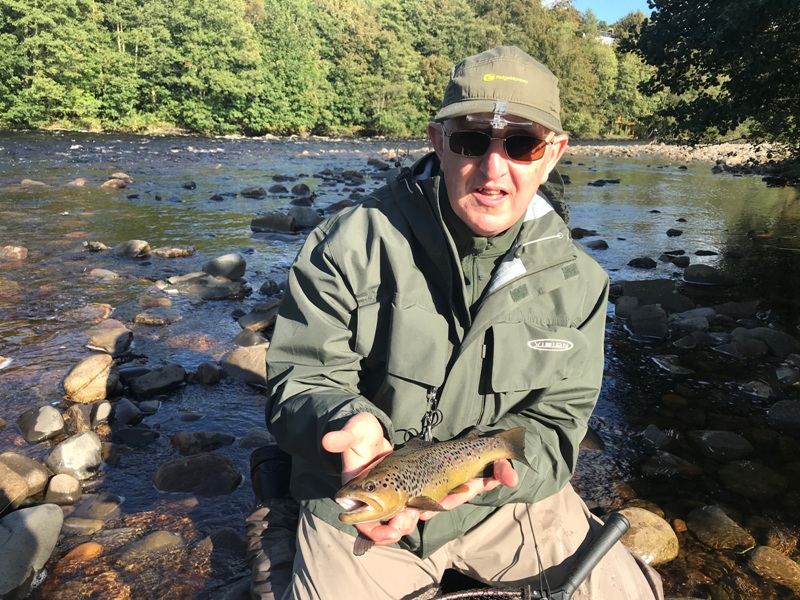
In summary don’t be put off by high water river conditions, feeding fish are often concentrated in slack edges specifically those that run over gravel. Do some research when your river is at more typical levels. Look for shelving pea gravel shores on the inside of bends especially those above the water line. This will be a haven for many fish as the river rises because it gives shelter from the brutal current elsewhere. Moreover they can provide you with several good spots to try when the rivers are high. Based on current conditions here in the UK many of us are going to be fishing big rivers sooner or later. Regards, Jonathan. |
| Back to Back Issues Page |
